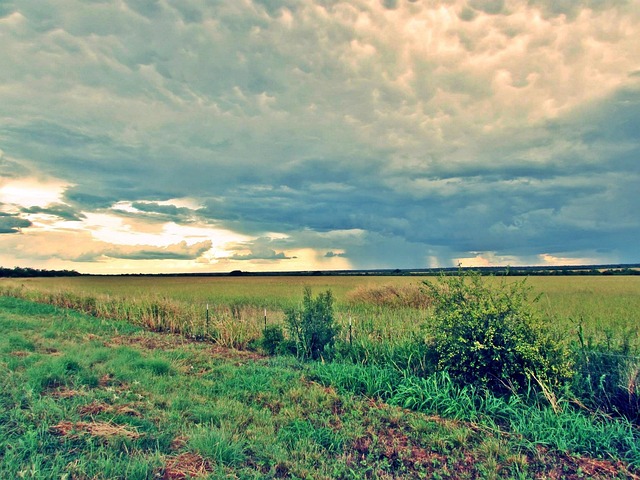Texas is a state with a deep-rooted history that blends the legacies of indigenous peoples, Spanish explorers, French settlers, Mexican culture, and Anglo-American influences. Its iconic symbols like the Lone Star flag and bluebonnet State flower, along with the Texas State Capitol and Texas Longhorn, embody its unique cultural tapestry and the resilience of its inhabitants. The state's diverse ecosystems range from the Chihuahuan Desert to the Edwards Plateau and vibrant coastal areas, which are home to a variety of species like the Texas horned lizard and golden-cheeked warbler, and crucial for ecological services such as water filtration and flood control.
Economically, Texas is a powerhouse, with a GDP larger than many individual nations, and is renowned for its energy sector as the top producer of oil and natural gas in the U.S., contributing to America's energy independence and the global energy supply. The state also leads in technology innovation, particularly in cities like Austin, which is on par with Silicon Valley. Its strategic ports are vital for international trade relations, and its agriculture sector is fundamental to the U.S. agricultural industry. Texas' economic diversity and robust contributions make it a significant economic driver within the United States.
Embark on a journey through the diverse landscapes and rich heritage of Texas, where history and modernity intertwine. From its iconic symbols steeped in legacy to its vibrant ecosystems ranging from arid deserts to lush wetlands, the Lone Star State unfolds a tapestry of natural and economic wonder. As an economic powerhouse, Texas has carved a significant role in shaping the American economy, showcasing its resilience and innovation. Join us as we delve into the fascinating aspects that make Texas an intriguing subject of exploration and study.
- The Lone Star State's Rich History and Iconic Symbols
- Texas' Diverse Ecosystems: From Desert to Wetlands
- Economic Powerhouse: Texas' Role in Shaping the American Economy
The Lone Star State's Rich History and Iconic Symbols

Texas, the Lone Star State, is steeped in a rich tapestry of history that spans centuries, from the indigenous peoples who first inhabited the land to its pivotal role in the formation of the United States. The state’s history is marked by significant events, including its independence from Mexico and annexation by the U.S., as well as its influence on the country’s expansion into the western frontier. Texas’s past is a mosaic of diverse cultures, from Spanish explorers and settlers to the influences of French, Mexican, and Anglo-American populations, each leaving their mark on the region’s heritage.
Iconic symbols of Texas abound, symbolizing its unique character and pride. The Lone Star flag, representing the state’s brief republican existence before becoming a part of the U.S., is one such emblem. Another is the bluebonnet, the state flower, which blankets the landscape in a vibrant display each spring. The Texas State Capitol in Austin stands as a testament to the state’s commitment to its history and governance, being the tallest state capitol building in the country. Additionally, the Texas Longhorn, an enduring symbol of the state’s livestock industry and cowboy heritage, reflects the resilience and tenacity that have characterized Texans throughout history. These symbols, woven into the identity of Texas, remind residents and visitors alike of the state’s storied past and the enduring spirit of its people.
Texas' Diverse Ecosystems: From Desert to Wetlands

Texas, the second-largest state in the United States, boasts a remarkable diversity of ecosystems that range from arid deserts to lush wetlands. The state’s geographical expanse encompasses several distinct ecological zones, each with its unique set of flora and fauna. In the southwestern corner, the Chihuahuan Desert stretches across Texas, characterized by its sparse vegetation, dramatic temperature fluctuations, and rugged terrain. This desert ecosystem is home to a variety of cacti and succulents perfectly adapted to conserve water in the harsh conditions. Moving eastward, the Edwards Plateau presents a transition zone with more grasslands and oak forests, which provide habitat for wildlife like the Texas horned lizard and the golden-cheeked warbler, a species of special concern.
Furthermore, Texas’ coastal regions along the Gulf of Mexico host a complex network of wetlands, including marshes, bays, and estuaries that are vital to the state’s aquatic biodiversity. The Aransas National Wildlife Refuge is a prime example, serving as a wintering ground for whooping cranes, one of the rarest birds in North America. These wetlands play a crucial role in water purification, flood mitigation, and supporting a myriad of fish and bird species, underscoring the importance of Texas’ varied habitats in maintaining ecological balance and contributing to the state’s rich natural heritage.
Economic Powerhouse: Texas' Role in Shaping the American Economy

Texas, a state as vast as it is diverse, has long played a pivotal role in shaping the American economy. With an economic output larger than that of many standalone nations, Texas’ influence extends far beyond its borders. The Lone Star State boasts a robust energy sector, leading the nation in oil and natural gas production. This sector not only fuels the state’s economy but also significantly contributes to the country’s energy independence and global energy supply. Beyond energy, Texas is a hub for technology, particularly in Silicon Valley-equivalent areas like Austin, which houses a burgeoning tech industry and a thriving startup ecosystem. The state’s economic prowess is further underscored by its trade relationships; Texas ports are vital conduits for international commerce, linking the U.S. to key trading partners around the globe. Agriculture also remains a cornerstone of Texas’ economy, with vast expanses of fertile land producing everything from cotton to beef, making it a significant contributor to America’s agricultural output. This multifaceted economic landscape demonstrates why Texas is often regarded as an economic powerhouse within the United States.
Texas, as the second-largest state in the Union, boasts a rich tapestry of history, diverse ecosystems, and a significant role in shaping America’s economic landscape. Its iconic symbols and storied past reflect its unique character, while its natural habitats range from arid deserts to lush wetlands, showcasing the state’s environmental complexity. Economically, Texas continues to be a powerhouse, contributing immensely to national industries and trade. The Lone Star State’s multifaceted nature is a testament to its enduring allure and influence within the country and beyond.



